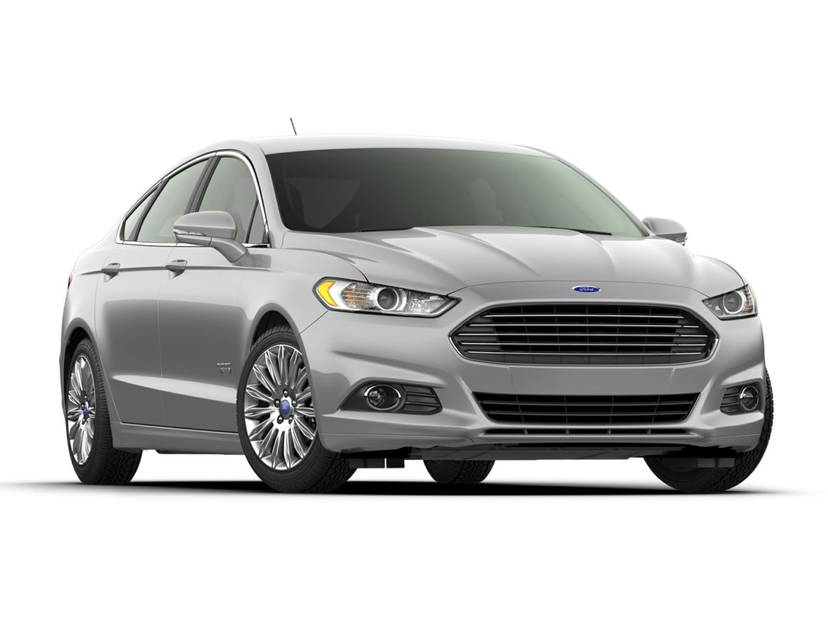
Vehicle Overview
Ford redesigned the Fusion for 2013 as a global car headed for international markets as the Mondeo. It’s a different tack from the prior Fusion, which was distinct from its international counterpart. Relative to its predecessor, the Fusion Hybrid sees improvements to city and highway gas mileage. Competitors include hybrid versions of the Toyota Camry, Hyundai Sonata and Kia Optima, as well as the diesel-powered Volkswagen Passat TDI.
There is also a plug-in hybrid version called the Fusion Energi that can travel up to 21 miles on electric power.
(Skip to details on the: Fusion Energi)
Exterior
Design cues mirror the Evos Concept from the 2011 Frankfurt Motor Show, with thin headlamps that sweep clear toward the front fenders and a low, forward grille. The belt line stays visually flat in contrast to the rising lines on most sedans. The bumper runs flush with the trunk lid, with integrated tailpipes beneath.
Interior
Inside, the Fusion adopts MyFord Touch with a few more physical keys along with detents to help drivers find buttons easier. Thinner seats free up rear legroom, and Ford says it moved the dash closer to the windshield to open up visual space.
A three-spoke steering wheel stacks audio controls under Ford’s five-way directional keys, which control LCD menus that flank the speedometer. Like most hybrids, the Fusion Hybrid’s battery pack sacrifices some trunk room versus the non-hybrid Fusion.
Under the Hood
The Fusion Hybrid teams a 2.0-liter four-cylinder that runs on a more efficient Atkinson cycle with an electric motor, for 185 total horsepower. A lithium-ion battery powers the motor, which allows the Fusion Hybrid to cruise on electric power at speeds up to 62 mph. That’s a 15-mph improvement over the last Fusion Hybrid. Ford maintains performance will be similar between the 2.0-liter Fusion Hybrid and its 2.5-liter predecessor, with overall gas mileage at 44/41 mpg city/highway — besting the outgoing car’s 41/36 mpg, as well as the Camry Hybrid (up to 43/39 mpg) and Sonata Hybrid (35/40 mpg).
Ford says it redesigned the Fusion’s multilink rear suspension and improved its hood sealing, which should help quiet the cabin. Hybrid and Energi models have active noise cancellation, something the non-hybrid Fusion goes without.
Safety
Front and side airbags, including dual knee airbags, are standard. So are the federally required antilock brakes and electronic stability system. High-tech safety features rival many luxury cars, with lane departure warning and mitigation systems, drowsy-driver detection and adaptive cruise control with forward collision warning, a blind spot warning system, cross-traffic alert and Ford’s automatic parking system.
Fusion Energi
At full charge, the Fusion Energi is capable of traveling up to 21 miles on electric power with a combined total range of around 620 miles.
Sharing essentially the same powertrain as the Fusion Hybrid model, the Energi plug-in features a larger rechargeable battery that can be charged bya 240- or 120-volt power source via an illuminated charge door on the front driver’s side fender. Due to the larger battery pack, trunk space in the Energi drops to 8.2 cubic feet, compared to the Hybrid model’s 12 cubic feet.
Like its hybrid counterpart, the Energi features auto start/stop, low-rolling resistance tires and regenerative braking for increased fuel efficiency. Back to top

















